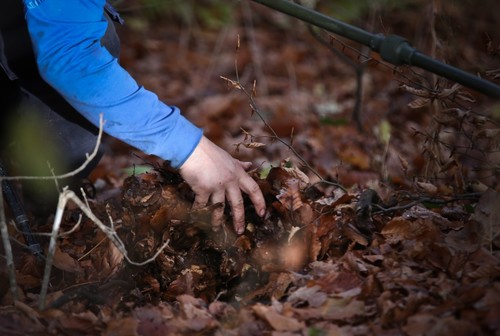© Turkuvaz Haberleşme ve Yayıncılık 2026
More than 100,000 civilians lost their lives in the Bosnian War, which ended with the Dayton Peace Agreement that was initialed in the United States on Nov. 21, 1995. Although the armed conflict ended long ago, civilians in many regions of the country are still at risk because of the scattered mines that were laid during wartime.
While the demining activities that started after the war continue, 615 people, mostly civilians, have lost their lives and 1,139 people have been wounded or permanently disabled in 754 landmine explosions.
Minefields, which are usually trespassed by wood, scrap collectors or children who don't pay attention to the warning signs in rural areas, continue to pose a risk for hundreds of thousands of people.

Muhammed Dulovic, a father of three, has been involved in demining activities for 11 years.
Damir Vatres of Sarajevo lost his hand when he stepped on a mine that was made to look like a toy. According to experts the mine was left in the area after an attack organized by Serbian soldiers in the Dobrinja district of capital Sarajevo in 1995.
Vatres, who lost his hand at the age of 6, told Anadolu Agency (AA) that while he was playing in front his house one day, he went after a ball that was thrown nearby into an abandoned area. While searching for the ball he said he found a toy car and put it in his pocket.
"After I went home and had lunch, I started playing with the toy car at the entrance of my house. When I pressed a little hard on the toy, it exploded," he said, adding that he got drenched in blood. "When I ran to open the door and go inside, I realized that my hand was torn off in the blast."
He said his neighbor took him to the hospital as soon as he saw him, adding that one of his eyes was hurt as well. He stressed that, although the demining process continues, there are still minefields and families should warn their children especially in mountainous areas.
Vatres, who works for a private company, said the state does not provide enough support for mine victims like himself.
Mine clearing specialists work very close to danger in minefields that correspond to 2.13 percent of the country's territory. Since 1996, 51 sappers have lost their lives in explosions that occurred during cleaning activities.
Muhammed Dulovic, who participated in demining activities in Zoranovici village near Sarajevo, is one of the experts who put his life at risk.
Dulovic, a father of three, has been involved in demining activities for 11 years. He said in the past years, two close friends have died in explosions that occurred during work. Still, he said he is satisfied with his work despite the danger, because he does a useful job for the people.
"Sometimes I feel bad because there are still landmines all over the country. I am a little scared too. This is normal," he said.
Slaven Vidovic, who works as a planning specialist at the Bosnia Herzegovina Mine Action Center (BHMAC), pointed out that there are 20,000 registered and approximately 15,000 unregistered landmines in Bosnia and Herzegovina, according to their records.
Vidovic said the demining activities have been ongoing since 1996, and that there are currently 79,000 mines in 8,378 points detected throughout the country. He noted that they are doing all they can to reduce the landmine risk in the country.
"Most of the big cities have been cleared of landmines, however, the struggle still continues in small towns and some villages," he said.
Vidovic said they have enough technical and human resources at their disposal for mine clearing, but the lack of funds is slowing down the activities. He added that the deadline for cleaning the country entirely of mines will be extended to 2024.
